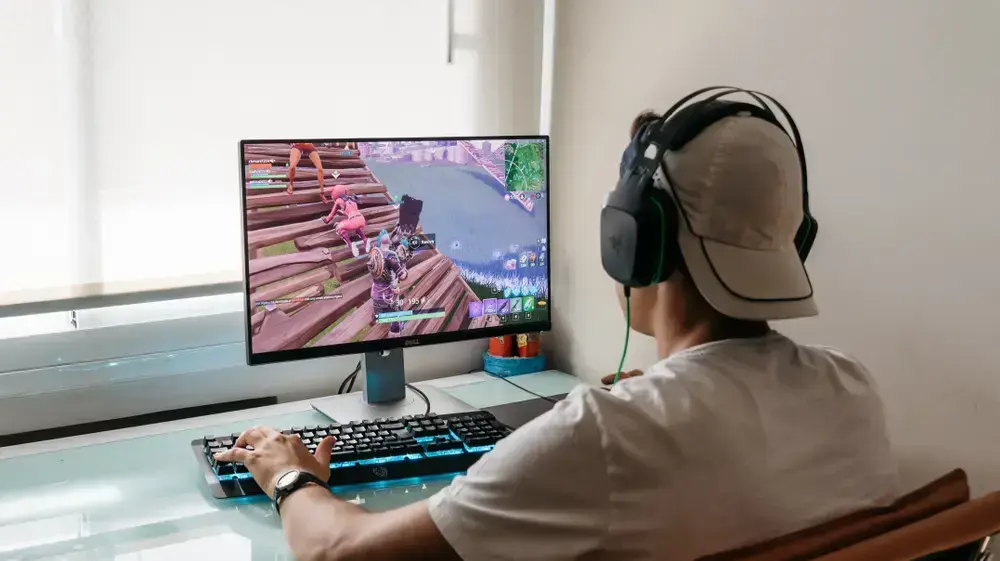A 15-year-old teenager killed his parents and his 10-year-old brother in Elche on February 8 with a hunting shotgun.
The boy's alleged addiction to the video game
Fortnite
reopened in public opinion a debate that has been recurring for years: do video games enhance violent behavior?
Many comments on social networks and the opinions of supposed experts pointed to an affirmative answer to the question.
But the scientific evidence shows opposite results to that thesis.
More information
A 15-year-old boy shot dead his parents and his younger brother in Elche (Alicante)
Diego Redolar, professor of neuroscience, vice-dean of Research for Psychology Studies at the Open University of Catalonia (UOC) and director of Brain360's neuromodulation unit, points out that linking video games and violence is something that has been tried hundreds of times.
Moreover, if a scientific study was found that related them, the news would go around the world.
However, no research to date proves that link.
"It is true that in the field of neuroscience it has been studied that violent video games tend to activate the nervous substrate of reinforcement: that is, people like them," explains Redolar, who emphasizes that they like them in the same way that they do other types of products that explicitly portray aggressiveness, such as movies or series.
"What there is evidence of, and more and more scientific literature, is that the use of video games improves visuospatial skills and cognitive skills such as attention, sensory perception, working memory or executive functions," explains Redolar, which leaves another piece of information that has been corroborated by their own studies: "All these long-term improvements, moreover, are greater if users start playing video games before the age of 14."
The professor warns of another widespread bad practice in the media: putting everything that sounds technological in the same category: video games, social networks, applications,
tablets
… “It is a kind of sack where all kinds of platforms, devices and content are put. They are not related to each other."
The house where the lifeless bodies were discovered, in the district of Algoda, this Saturday.JOAQUIN DE HARO RODRIGUEZ
The video game industry is the cultural industry that generates the most money in the world: it moved 147,000 million euros in 2020, according to the American consultancy Newzoo.
In Spain, far from being a niche sector, the majority of the population enjoys interactive leisure to a greater or lesser extent without posing a risk to society.
According to data from the Spanish Video Game Association (AEVI), approximately 47% of Spaniards between the ages of six and 64 play video games – including mobile hobbies such as Candy Crush – and the average Spanish player is between 30 and 35 years old —In this age range, consumption is greater in women than in men—.
Héctor Puente, professor of sociology at the UCM and video game designer, regrets that the subject is being addressed "in an equivocal, yellowish and very comfortable way".
The reason?
“In the first place, I am very struck by the fact that a video game has been played or a book has been read in which a certain level of violence appears with that being the cause of the events, when For example, a thousand violent movies or series in which murders appear are seen daily.
It is absurd and very easy”.
There are many examples of what Puente explains: Marilyn Manson was associated with the massacre at Columbine (Colorado) because the murderers listened to his music, or
The Catcher in the Rye,
by JD Salinger, who was blame for the death of John Lennon.
“That is called determinism, which is something that should never be done in any behavioral science: attributing behavior that is totally anecdotal to a device in such a biased way makes no sense,” explains Puente.
The sociologist also denounces the fact that video games are blamed “while the aggressor had a shotgun at home.
What security measures were taken?” he wonders.
“How could he access her?
There we see that responsibility is no longer so diluted in a straw man fallacy where the role of the video game serves as a scapegoat.
On whether consuming digital adventures has disadvantages, the sociologist admits that “it is a very interesting debate, but it can be extrapolated to any other medium”.
And he wonders if we could say that consuming TV, watching movies or reading novels has disadvantages:
"Scientific evidence tells us no, but of course, rather than focusing on the means of consumption, the important thing is to go to the content."
He admits that, since it is scientific evidence, "the fact that they have not been found does not mean that they do not exist", and that it is a subject "full of grays and nuances".
In addition to general studies, there are specific studies.
One of the video games that has been in the spotlight for the longest years, designated as one of the most violent and that has suffered the most smear campaigns, is the
Grand Theft Auto
saga .
This hit action series first came out in 1997 and has sold over 370 million copies worldwide.
It is a game that gives the user the freedom to carry out unequivocally violent actions: murder, rob, hit, attack buildings with military vehicles... However, experts Laura Stockdale and Sarah Coyne, after analyzing the evolution of British teenagers who regularly played this video game concluded that they were no more violent than other people in the same age group.
From the video game industry itself, José María Moreno, general director of AEVI, points out that there are several studies that reject the link between video games and violence and points out that the countries with the highest consumption of these works have become progressively safer.
Moreno warns that games are "the reflection of today's society, they show situations, values and particular cultural contexts, so they act as a socializing agent, and many try to promote more understanding, responsible and empathic behaviors, not only towards people but also towards the rest of the animals and the environment”.
And he points to the virtual version of the Prado Museum in the
Animal Crossing
video game as an example .
Animal Crossing
, by the way, was one of the most popular titles during the pandemic lockdowns starting in March 2020, a time during which the World Health Organization recommended spending time on video games to "stay healthy and take care of health." mental” through its #PlayApartTogether campaign.
It did so despite the fact that a year earlier the body had included video game addiction on its list of diseases.
The sociologist Puente clarifies this point: "They are designed to offer a specific experience, but to match replayability
I see addiction as a bit of a conflict if we take into account the great diversity of design structures and products.
The equivalent example would be television series, are they also made to be addictive?
Talking about addiction to a series can be very daring and complex”.
AEVI points out that there are classification systems, such as the European PEGI model, in order not to expose the little ones to games that may be far from their understanding and thus maintain responsible use of the most popular mode of entertainment today.
These labels also warn about the content of video games so that parents and guardians can decide which is the best option for children.
Another measure is parental control, enabled on all game consoles.
As the philosopher and pedagogue Gregorio Luri has said so many times, the titles played by previous generations were by themselves much more physically violent than those that can be played today.
“Before, people played wars with sticks and stones, or balls that ended in bumps, cuts and bruises, if not more serious.
Today, only buttons are pressed.”
Exclusive content for subscribers
read without limits
subscribe
I'm already a subscriber













